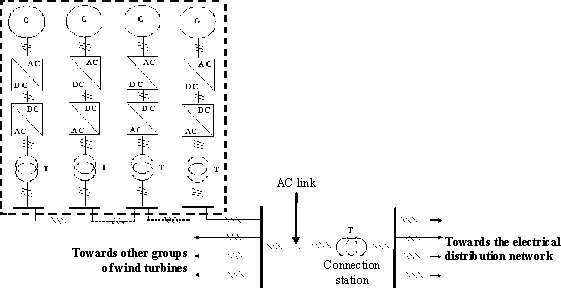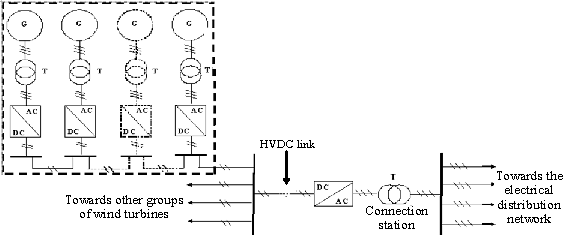3.9 Wind turbine farms
At sites with a significant wind resource, several machines are generally connected by a busbar connection, which is dedicated to a connection station. This enables us to direct the generated power towards the electrical distribution network. This type of connection is thus carried out in alternating mode, as is illustrated in Figure 3.64.
Figure 3.64. Example of the structure of a wind farm at variable speed with four feeders

For offshore variable speed wind turbines, where transmission by underwater cable is required, the presence of a DC bus also enables us to consider a series connection, thus creating a connection under high voltage DC (Figure 3.65). This voltage must be sized to enable the total AC power [BOU 09]. Let us note that it is a possible structure, but that it is not yet used.
This structure has first been imagined for offshore wind farms [VER 05], which are interfaced with the network via only one DC/AC converter. We could imagine, for example, a better contribution of wind farms to voltage adjustment at the connection point. Other possibilities of wind farm structures are presented in [MUL 04].
Figure 3.65. Example of the structure of a variable speed wind turbine farm with DC voltage links

Because wind turbines in a farm are positioned ...
Get Electricity Production from Renewables Energies now with the O’Reilly learning platform.
O’Reilly members experience books, live events, courses curated by job role, and more from O’Reilly and nearly 200 top publishers.

